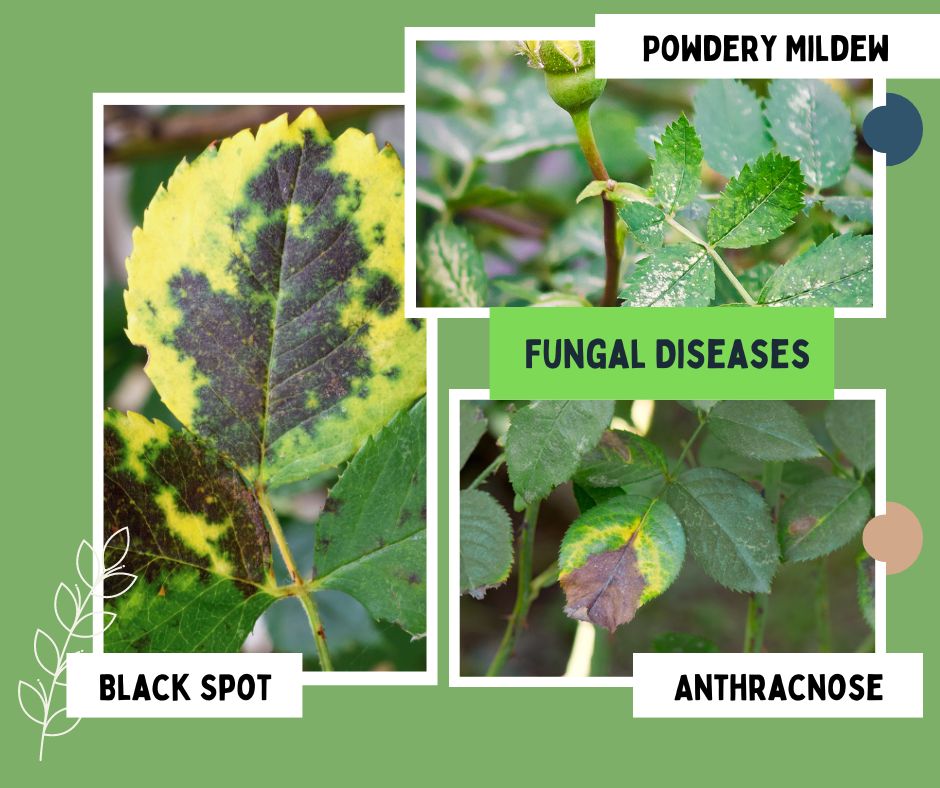Frank Brines
Rose Care FUNdamentals – November 2022

Frank Brines
ARS Master Rosarian
The weather has moderated slightly, can we relax? Fall brings warm days and cool nights, conditions that can ensure large colorful blossoms. But those same conditions can also bring moisture and a daily accumulation of ash and small dust particles. These create a great environment for fungal diseases. One example is powdery mildew. Early on it shows slight purple splotches on the underside of leaves and white powdery spots on top and white powder on the peduncle (neck) of the rose blossom.
Another common fungal disease is Black Spot. It is marked by black spots with fuzzy edges, then turn yellow and brown. Often it does not kill the plant outright but, over time, the loss of leaves can weaken the plant making it more susceptible to other stresses and to winter damage. It first develops on upper leaf surfaces, later adjacent areas turn yellow and leaves drop prematurely, usually beginning at the bottom of the plant progressing upward.
Yet another disease that presents similar signs is Anthracnose. It produces spots that are smooth edged with centers that turn gray and drop out. Treatment is the same for all three disease: Fungicide. If you’re unsure which disease(s) your roses are battling, just be sure the product is labeled for all three.

Roses benefit from a good rinsing to remove accumulated dust: Be sure to keep moisture off the blossoms to prevent yet another fungal disease, Botrytis, which will appear as rot of blossoms and will usually prevent them from opening. Another sign is red blotches on blooms.
One more pest: Check out my September 2021 article on Chilli Thrips: https://www.temeculavalleyrosesociety.org/nl/NL202109.shtml#h12. Continue to investigate for these pests and treat if found. They attack new growth, buds and blooms. Left untreated plants are stressed greatly, often shriveling the end buds or preventing bud formation. The life cycle of Chilli Thrips is short and includes falling to ground and becoming a grub and reappearing when warm weather arrives. One application of a pesticide spray is not sufficient for control. Follow the prescribed frequency on the product directions.
If you completed the light mid-season pruning in September/October as suggested in an earlier article, you pruned out dead, crossing canes, and thinned the middle of the plant. This will improve air circulation through the bush and reduce possible fungal diseases. This mid-season pruning and fertilizing encourages a new blooming cycle. Feel free to cut some of early blooms now and take them inside for bouquets.
Fall is a good time to check the pH of the soil. It should be slightly acidic, between 6.0 and 6.5. Any reading significantly below or above these levels will inhibit roses ability to use the nutrients you are giving them. Treating the pH problem now will give ample time for adjustments prior to spring pruning.
Unless you plan to exhibit, I do not recommend fertilizing after mid-October, but you may make a final application of fertilizer for the year before mid-November. If you do this, use a fertilizer lower in Nitrogen (N) and higher in Phosphate (P) and Potassium (K); that is, if your fertilizer has an N-P-K
